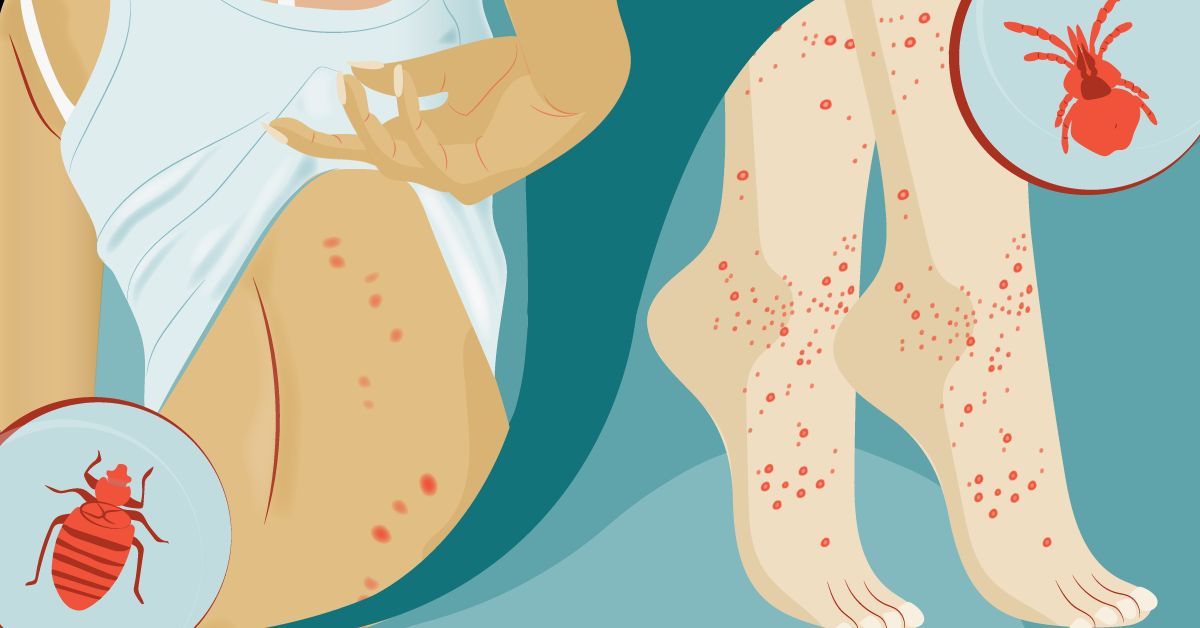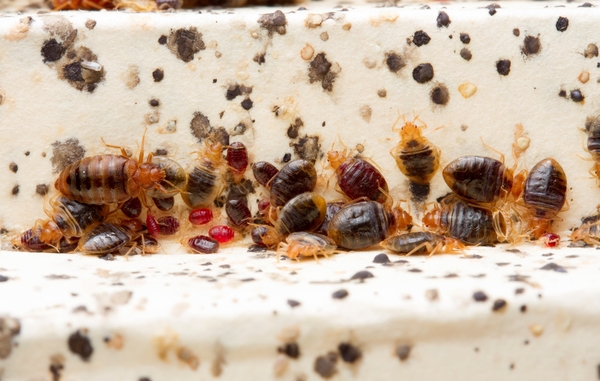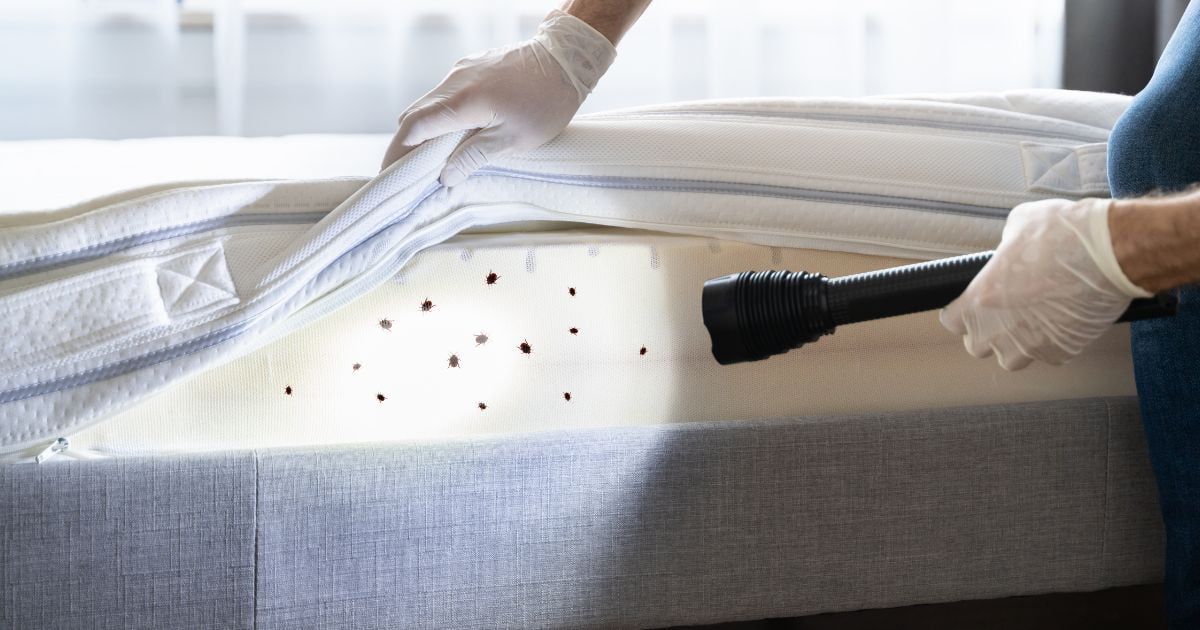Bed bugs can appear as soon as a few days after exposure to an infested area. These tiny insects are notoriously fast breeders and can quickly multiply in numbers, infesting your home or furniture.
Once they infiltrate, it can become challenging to eradicate them completely without professional assistance. The presence of bed bugs can be a major source of distress and discomfort for homeowners. These nocturnal pests are known for their relentless nature and can quickly turn a peaceful night’s sleep into a nightmare.
Understanding the timeline of bed bug infestations is crucial for taking swift and effective action. We will explore how long it takes for bed bugs to appear after exposure, shedding light on the speed at which these pests can invade your space. By knowing the signs and acting promptly, you can prevent a full-blown infestation and protect your home from these unwelcome creatures. So, without further ado, let’s dive in and explore the fascinating world of bed bugs.
Lifecycle Of Bed Bugs
Introduction:
In order to effectively combat bed bug infestations, it is crucial to understand the lifecycle of these tiny pests. Bed bugs go through several stages of development before becoming adults. By knowing how long it takes for bed bugs to appear after exposure, you can take the necessary steps to prevent their proliferation.
Egg Stage:
Bed bug eggs are one of the first signs of an infestation. After a female bed bug mates, she lays her eggs in small, hidden crevices near a host. These eggs are incredibly tiny, measuring about 1mm in size, making them difficult to spot with the naked eye. Within 1 to 2 weeks, the eggs hatch into nymphs.
Nymph Stage:
During the nymph stage, bed bugs go through five molts as they grow and develop. Each nymph looks similar to an adult bed bug, but smaller and nearly colorless. They require blood meals to progress to the next stage of development. The time it takes for a nymph to mature into an adult varies based on factors such as temperature and availability of food. On average, it can take anywhere from 5 to 9 weeks for bed bug nymphs to reach adulthood.
Adult Stage:
Once a bed bug reaches adulthood, it is capable of reproducing and sustaining its own population. Adult bed bugs are reddish-brown or mahogany in color, and they are about the size of an apple seed. They need to feed on blood every few days in order to survive. An adult bed bug can live for several months to a year, depending on environmental conditions and access to food sources.
In conclusion, understanding the lifecycle of bed bugs is crucial in preventing infestations from spreading. By being knowledgeable about the egg stage, nymph stage, and adult stage, you can take appropriate measures to detect and eliminate these pesky insects.

Credit: www.healthline.com
Conditions For Bed Bug Infestation
The conditions for bed bug infestation depend on various factors, including the optimal environment for bed bugs and their common hiding spots. Understanding these conditions is crucial in preventing and managing bed bug infestations.
Optimal Environment For Bed Bugs
Bed bugs thrive in environments with moderate temperatures ranging from 70 to 80 degrees Fahrenheit. In addition, they require regular access to a blood meal for sustenance, making human-inhabited spaces their preferred habitats.
Common Hiding Spots
- Mattresses and Box Springs: Bed bugs often hide in the seams, crevices, and tufts of these bedding essentials.
- Furniture: Seams, joints, and cushions of upholstered furniture provide ideal hiding spots for bed bugs.
- Cracks and Crevices: Baseboards, electrical outlets, and wall voids are common hiding places for bed bugs.
Timeframe For Bed Bug Appearance After Exposure
When you stay at a hotel, visit someone’s home, or bring in used furniture, you’re at risk of encountering bed bugs. It can be unsettling to think about, but it’s important to be aware of the timeframe for bed bug appearance after exposure. Knowing when symptoms may occur can help you take quick action to mitigate the situation. Let’s explore immediate and delayed reactions to bed bug exposure.
Immediate Reactions
Upon immediate exposure to bed bugs, you may notice red and itchy welts on your skin. These welts can be mistaken for mosquito bites or rashes, but they often appear in a linear or clustered pattern. Immediate reactions typically occur within a few hours of being in an infested area or coming into contact with infested items. If you notice these symptoms, it’s crucial to inspect the area for signs of bed bugs and take the necessary steps to prevent further spread.
Delayed Symptoms
In some cases, reactions to bed bug exposure may be delayed. It’s not uncommon for symptoms to appear several days or even weeks after exposure. This delayed onset can make it challenging to identify the source of the infestation. Delayed symptoms may include persistent itching, allergic reactions, and in severe cases, anxiety or insomnia. Being aware of potential delayed symptoms is essential for early detection and swift intervention to address the infestation.
:max_bytes(150000):strip_icc()/GettyImages-513433472-54198674b8d84e588c345da1e6c74b13.jpg)
Credit: www.health.com
Identifying Bed Bug Bites
Characteristics Of Bed Bug Bites
Bed bug bites can be quite distinctive, making it easier to identify them. The following are some key characteristics of bed bug bites:
- Small, red, itchy bumps: Bed bug bites generally appear as small red bumps on the skin. They may also be slightly swollen and itchy.
- Clusters or lines: Bed bug bites often occur in groups or clusters, or they may form a line along an area of exposed skin. This is because bed bugs usually feed in a linear pattern.
- Visible bite marks: In some cases, bed bug bites may leave behind visible bite marks, such as tiny puncture wounds or blister-like formations. These marks can be an important clue in identifying bed bug bites.
Distinguishing Factors From Other Insect Bites
While bed bug bites share certain characteristics with bites from other insects, there are some distinguishing factors that can help you differentiate them:
- Bite patterns: Unlike mosquito bites that can appear randomly on the body, bed bug bites tend to appear in a linear or clustered pattern.
- Location: Bed bug bites often occur on areas of the body that are exposed during sleep, such as the face, neck, arms, and legs. These bites can also be found in a straight line or in groups on areas of the body that come into contact with the mattress.
- Intensity of itchiness: While mosquito bites are notorious for causing intense itching, bed bug bites can also be quite itchy but the level of itchiness can vary from person to person.
- Presence of bed bugs: If you suspect bed bug bites, it’s important to inspect your living environment for any signs of a bed bug infestation. Look for bugs, shed skins, or dark spots on mattresses, furniture, and nearby cracks.
Treatment For Bed Bug Bites
After exposure to bed bugs, it can take a few days for their bites to appear. When dealing with bed bug bites, it’s important to seek immediate treatment to alleviate itching and discomfort. Using antihistamines and topical creams can help relieve symptoms until the bites heal.
Bed bug bites can cause discomfort and itching. Seeking treatment can help alleviate symptoms.Home Remedies
Some home remedies to relieve bed bug bites include:- Applying calamine lotion to reduce itching
- Using a cold compress to reduce swelling
- Applying aloe vera gel for soothing relief
Medical Intervention
Medical intervention for severe bed bug bites may involve:- Prescription-strength topical corticosteroids
- Oral antihistamines to reduce itching
- Consultation with a dermatologist for specialized treatment

Credit: content.ces.ncsu.edu
Prevention Of Bed Bug Infestation
After being exposed to bed bugs, it can take anywhere from a few days to several weeks for signs of an infestation to appear. To prevent bed bug infestations, it’s essential to inspect and vacuum frequently, launder and heat-dry bedding, and encase mattresses and box springs in protective covers.
Regular monitoring and early detection are key to preventing larger infestations and minimizing the need for pest control treatments.
Effective Strategies
1. Keep your living space clutter-free as bed bugs hide in cluttered areas.
2. Regularly inspect your bedding, furniture, and clothing for signs of bed bugs.
3. Seal any cracks or crevices in walls, baseboards, and furniture to prevent bed bugs.
4. Avoid bringing second-hand furniture into your home without thoroughly inspecting it.
Maintenance Tips
1. Wash and dry your bedding, curtains, and clothing on high heat to kill bed bugs.
2. Vacuum your home frequently, focusing on areas where bed bugs may hide.
3. Use mattress covers designed to keep bed bugs out and trap any existing ones.
4. Monitor your home regularly for signs of bed bugs to catch infestations early.
Frequently Asked Questions For How Long Does It Take For Bed Bugs To Appear After Exposure?
How Quickly Do Bed Bugs Appear After Exposure?
Bed bugs can appear within days if they find a suitable environment. However, it may take weeks for signs to become noticeable, such as bites or visible bugs.
What Are The Signs Of Bed Bugs Showing Up?
Look out for red, itchy bites in a line or cluster, small bloodstains on bedding, dark spots of bed bug excrement, or an offensive musty odor in the room.
Can Bed Bugs Be Present Without Any Visible Signs?
Yes, bed bugs can hide in cracks, crevices, and electrical outlets, making them difficult to detect even with a thorough inspection. Regular monitoring is crucial.
Conclusion
In a nutshell, bed bugs can appear within a few days to a few weeks after exposure. It’s important to stay vigilant and act promptly to prevent an infestation. By understanding the timeline, you can take the necessary precautions to protect yourself and your home.
Stay informed and proactive to keep these pests at bay.
Related posts:

I’m MD Tanvir, and I bring years of expertise gained from working closely with pest control companies to the forefront. My journey in the industry has inspired me to launch Bug Battler, a platform aimed at equipping people with the know-how to combat pests autonomously. Through Bug Battler, I aim to empower individuals with practical insights to tackle pest infestations effectively.

